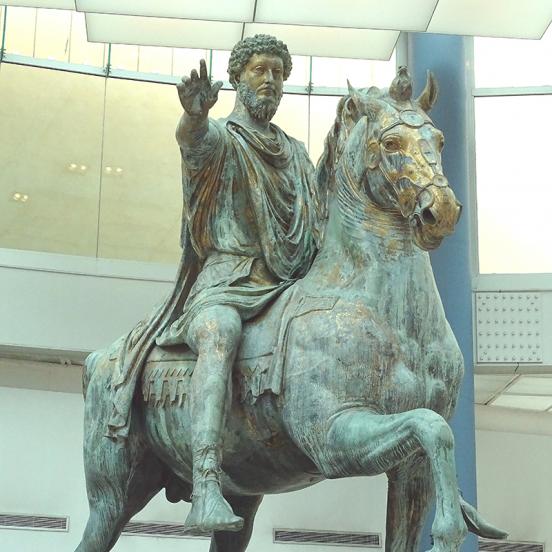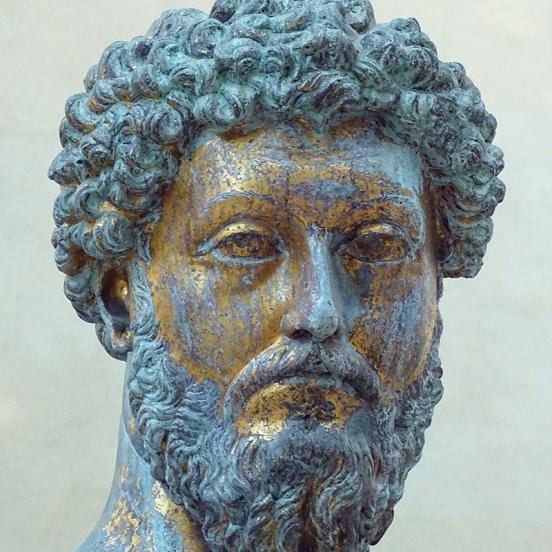Equestrian statue of Marcus Aurelius
In the Roman imperial age there was a long tradition of imperial equestrian statues, yet only a single complete one exists today: the unique, more than 4-metre-high statue of Marcus Aurelius (166-180), which survived the last 1800 years such that it has never been under the earth. Right up to1981 it stood in the centre of Piazza del Campidoglio on the Capitoline Hill at the mercy of the weather, but then following complete restoration it was placed inside the Capitoline Museum and a copy was erected in the square. The formerly entirely gilded huge hollow bronze statue was cast from several pieces. The emperor was represented as a victorious military leader and a 12th-century description tells us that a defeated barbarian was lying under the lifted right front leg of his horse. Hence the motion of his raised right hand makes sense: it is clementia, the gesture of clemency, employed when the emperor shows mercy to the defeated enemy. Marcus Aurelius’s long beard and curly hair reminiscent of Greek philosophers indicate that he was a representative of stoic philosophy. Small details make the statue of the horse extremely life-like: not only the animal’s tense muscles but the protruding bones and blood vessels of its head are depicted.


